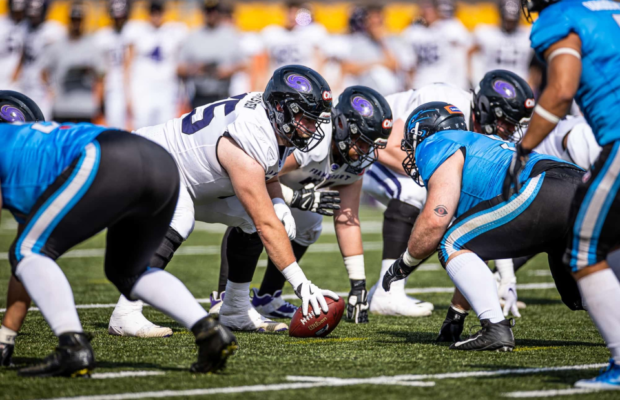Introduction to American Football Strategies

Are you a die-hard American football fan who wants to know more about the game’s strategies and tactics? Or perhaps an online betting enthusiast looking to improve your knowledge of the sport. Look no further! In this post, we’ll dive into the key offensive, defensive, and special teams strategies used in American football. If you are interested in online betting, you can refer to it here: tharaacasino.com
Offensive Strategies
Offensive strategies are the tactics used by teams to score points and penetrate the opposing team’s defense. The most common strategy is to run a play that involves passing or rushing the ball, but there are several different offensive plays that can be utilized.
One popular strategy is known as the spread offense. This tactic involves spreading out the players across the field, which makes it harder for defenders to cover all of them. It also creates more opportunities for short passes and quick runs.
Another effective offensive strategy is called play-action passing. This technique involves faking a run play before throwing the ball downfield, which can catch defenders off-guard and create big gains.
Teams may also employ trick plays such as flea-flickers or double-reverses in order to confuse their opponents and gain an advantage on offense.
Successful offensive strategies rely on strong communication between coaches and players, as well as careful study of opponent defenses and weaknesses. By executing these strategies effectively, teams can dominate their opponents.
Defensive Strategies
Defensive Strategies are an essential part of American Football. The main objective of the defense is to prevent the opposing team from scoring points by tackling and intercepting passes. There are different types of defensive strategies that teams use depending on their opponent, field position, down, distance and time remaining.
One popular defensive strategy is the 3-4 defense which consists of three defensive linemen and four linebackers. This formation allows for more flexibility in coverage and blitzing options while still maintaining a strong front against the run.
Another effective defensive strategy is man-to-man coverage where each defender has a specific offensive player to cover throughout the game. This can be challenging but it also provides tight coverage which makes it difficult for quarterbacks to complete passes.
Zone defenses are also commonly used where defenders divide up areas of the field into zones they’re responsible for covering. This type of defense can help defend against short or intermediate passes but may leave gaps open for longer throws.
Situational defenses like goal-line stands require teams to focus on stopping their opponents from scoring when they have limited yardage left before reaching the end zone.
American Football Defensive Strategies play a crucial role in every game by keeping opposing offenses at bay and giving their own offense chances to score and win games.
Special Teams Strategies
Special teams play a crucial role in American football. These are the players who come onto the field during kickoffs, punts, and field goals. Special teams strategies can make or break a game.
One important strategy for special teams is to have a designated returner for both kickoff and punt returns. This player should be fast, agile, and able to catch the ball under pressure. The team should also focus on blocking for the returner and creating running lanes.
Another key strategy is to have effective coverage on kickoffs and punts. This means having players who can tackle well in open space and prevent big returns by the opposing team.
Additionally, fake kicks can be used as a surprise tactic but must be executed perfectly with precision timing to avoid turning over possession of the ball.
Special teams coaches need to adjust their strategies based on weather conditions such as wind or rain that could affect kicking distance or accuracy.
Game Management Strategies
Game management strategies in American football refer to the tactics and decisions coaches make during a game to secure a win. One important aspect of game management is clock management, where teams try to control the amount of time left on the clock by running or passing plays.
Another strategy is situational play-calling, which involves making different strategic calls based on the situation at hand. For example, if a team needs only a few yards for a first down near their end zone, they may opt for short passes or runs instead of risking turnovers with deep throws.
Coaches also need to manage player fatigue and injuries throughout the game. This means rotating players when necessary and ensuring that they are hydrated and well-rested during breaks.
Good game management includes effective use of timeouts, challenges and other resources available to coaches during games. By using these resources wisely, coaches can give their team an advantage over opponents.
Successful game management requires careful planning before every match as well as quick thinking and adaptability during gameplay.